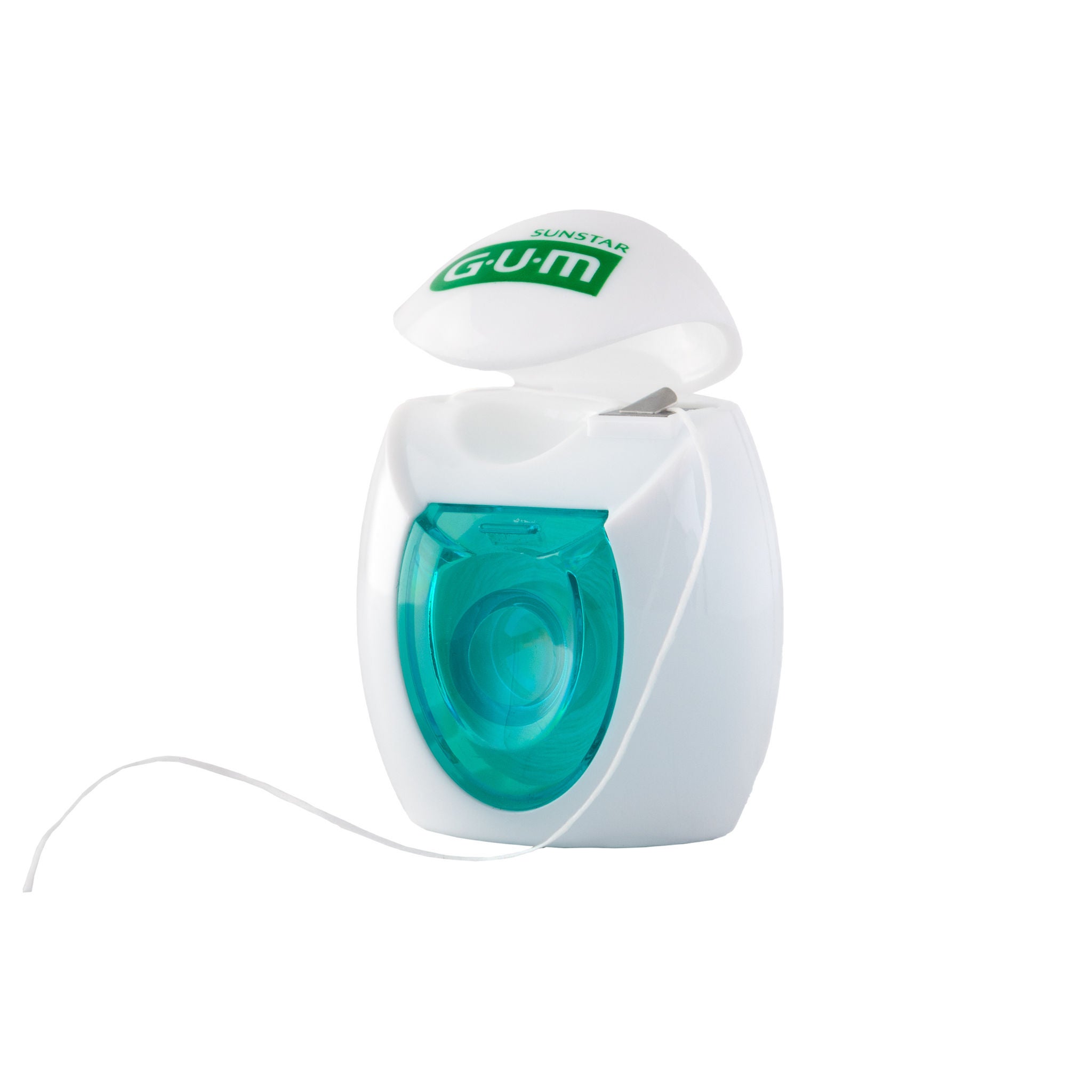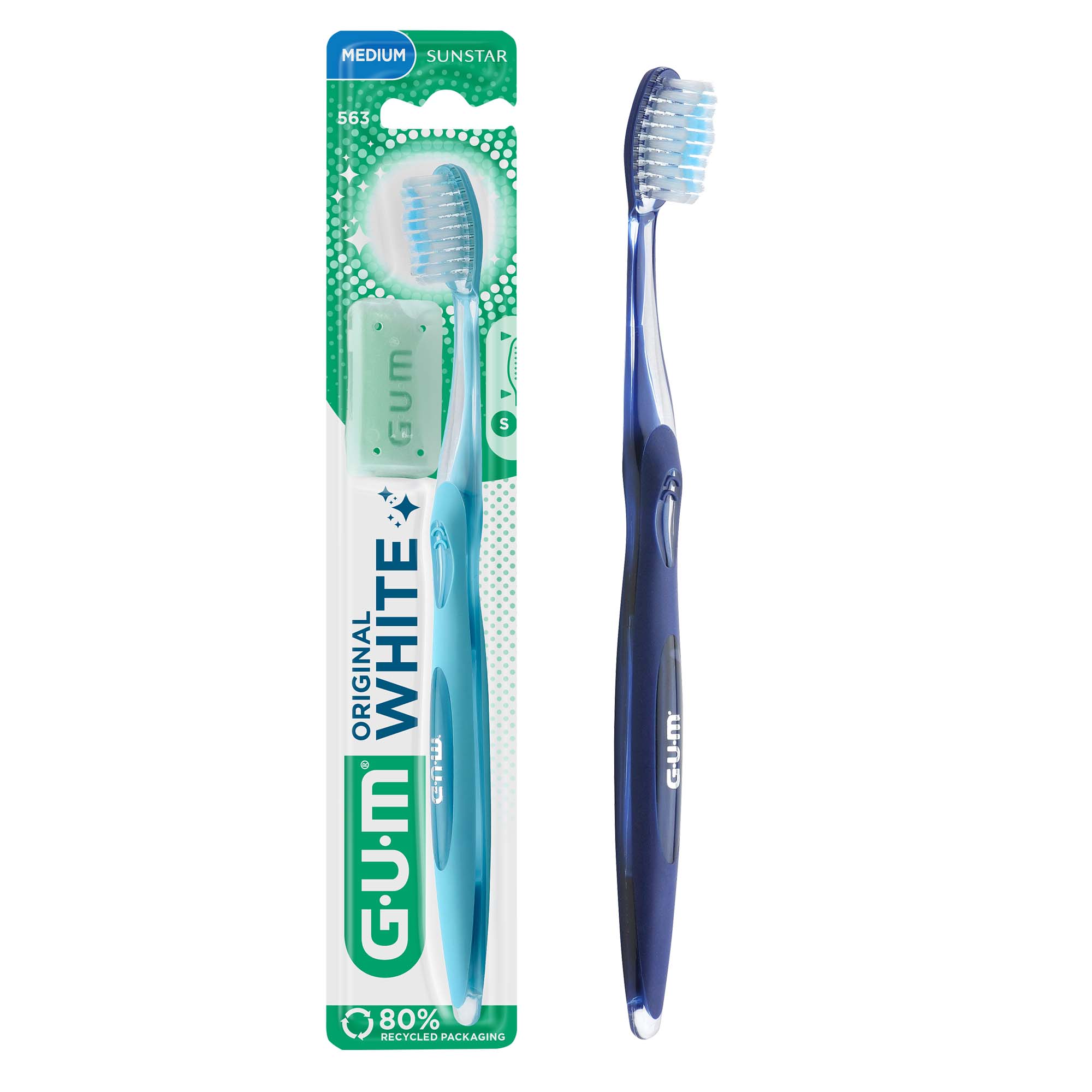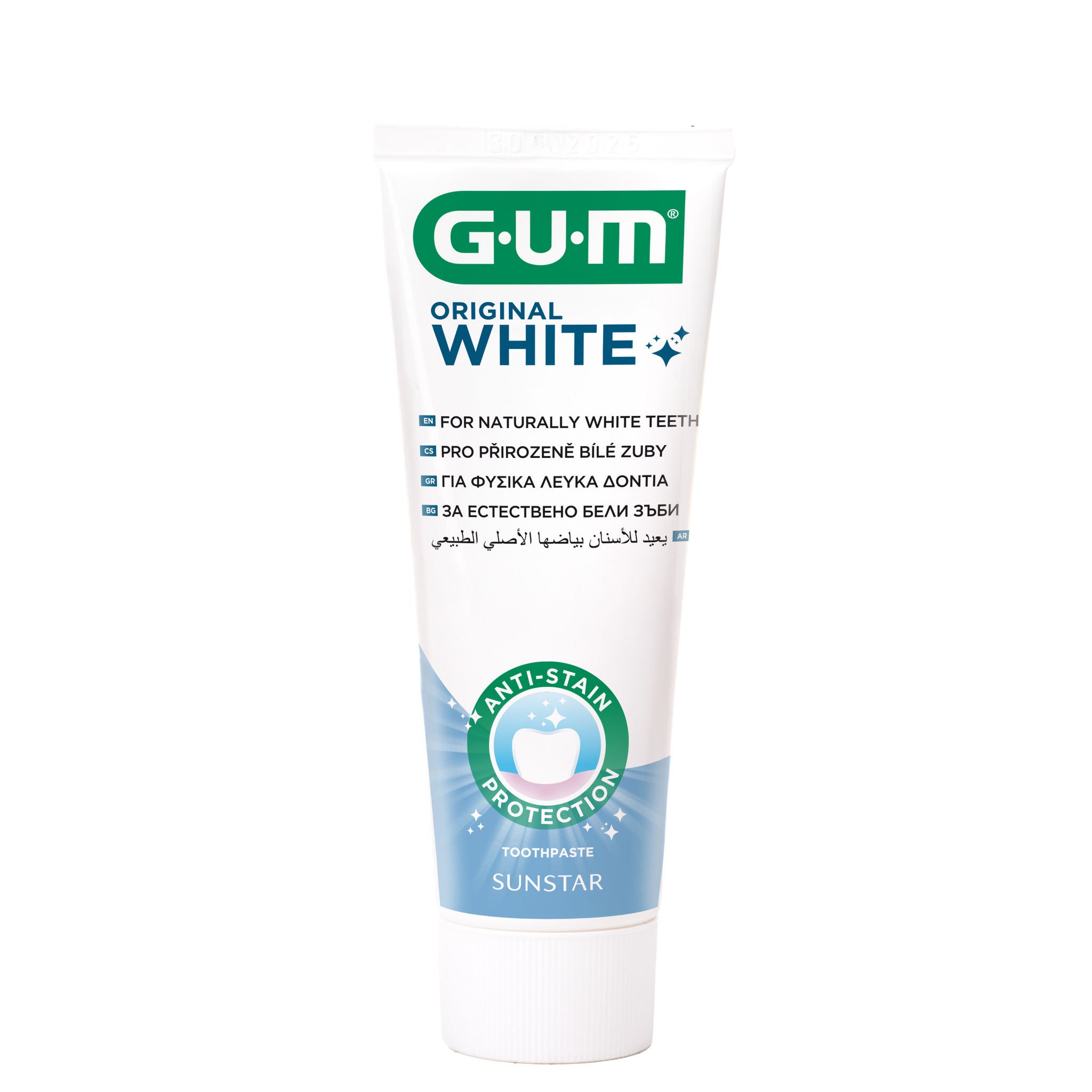Stained Teeth: Your Question Answered
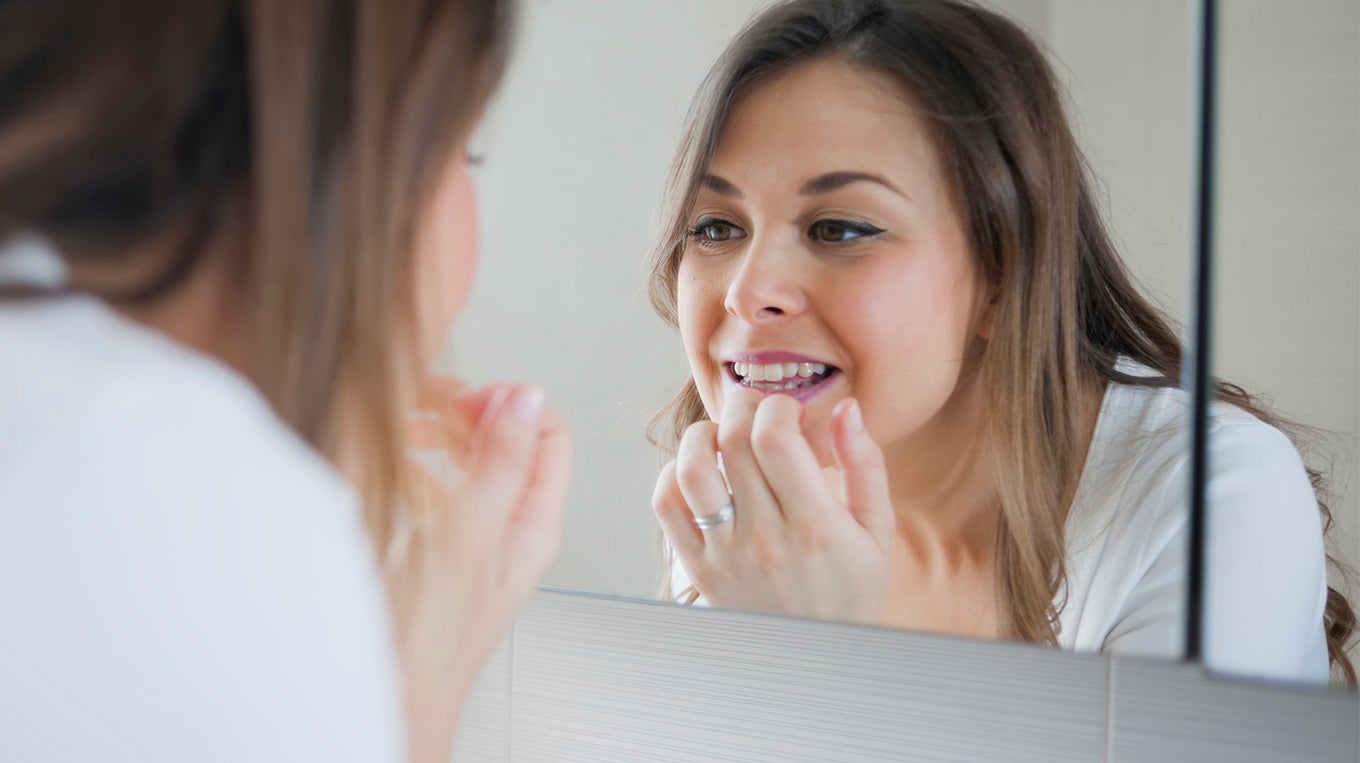
1. Why do teeth become stained?
From lifestyle to ageing, stains on teeth have many causes. If you’re wondering why your teeth stain and what stains them the most, taking a look at your daily habits might be a good place to start.
First up: diet! Coffee, red wine, dark soft drinks, tomato sauce, balsamic vinegar and curry are some of the worst offenders. Basically, if it’s dark in colour or highly pigmented, then it’s more likely to stain. Acidic foods and drinks also deserve a mention, as the acids they contain can strip the outer layer, or the tooth enamel making it easier for stains to settle in.
Can smoking and vaping cause stains too? Yes, they can. Tobacco products, whether cigarettes or chews, can discolour teeth. While vaping liquids don’t contain tar, they do contain nicotine which has been linked to tooth discolouration.
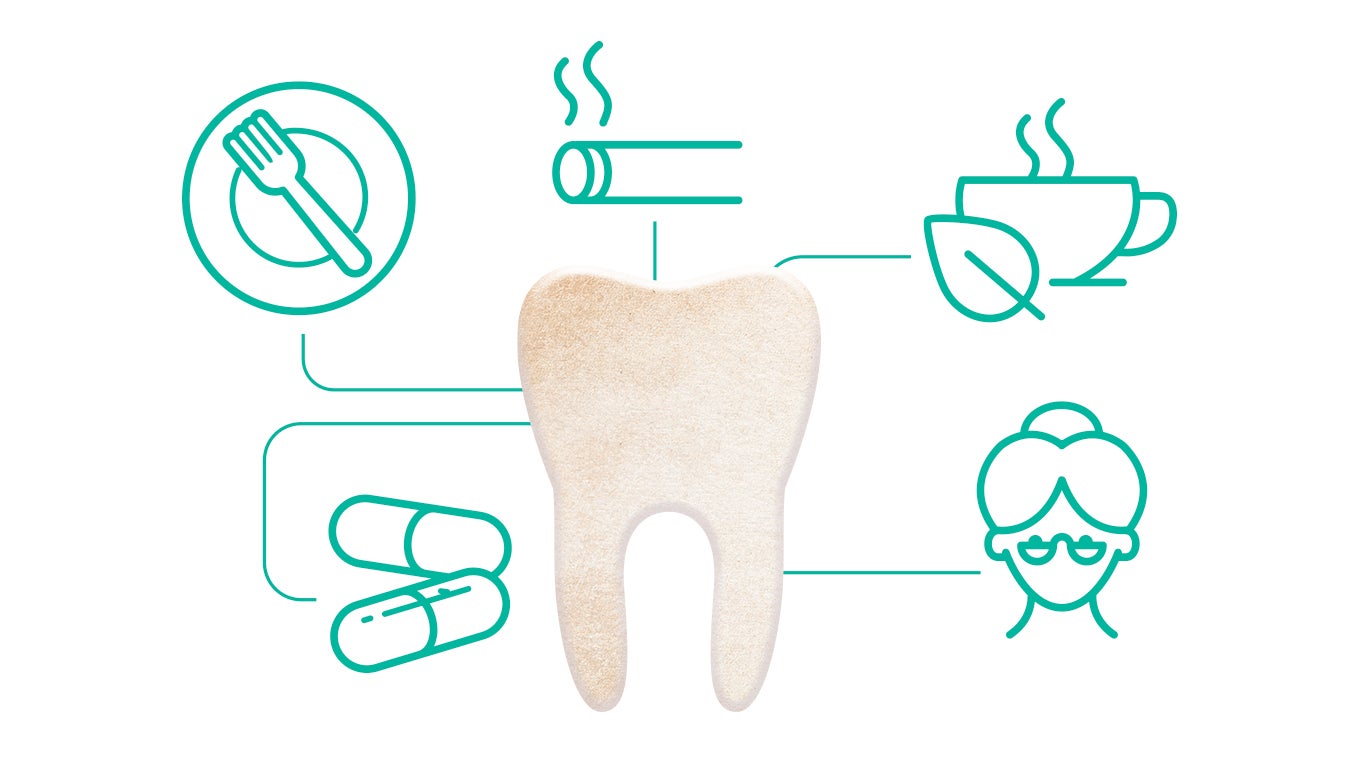
Lifestyle, life events and ageing can lead to stained teeth
There are many things we choose to do that can affect the colour of our teeth, but some factors are just beyond our control. For instance, the use of certain medication, such as some antibiotics, antihistamines, and anti-hypertension drugs. The natural ageing process also plays a part in tooth discolouration. Indeed, as you get older, your enamel wears away revealing the dentin, the inner tissue of your tooth, which is naturally more yellow and darkens over time.
What about oral health? The way you clean and look after your teeth is also important. By not cleaning your teeth thoroughly or often enough, you’re setting yourself up for tooth staining. Plaque build-up can make your teeth appear more yellow/brown. Not only this, the acids produced by the bacteria in plaque can erode your enamel, making it easier for stains to settle in.
2. Are stained teeth bad or unhealthy?
If you’re worried stained teeth might be bad for your health, there’s really no need to. Unlike tooth decay, stains in themselves cannot affect your health in any way. They might make you feel a little less confident when smiling but that’s about it! That isn’t to say that the cause of staining, such as regular smoking or poor oral hygiene, might not be harmful for your health.
3. What about stained teeth and tooth sensitivity?
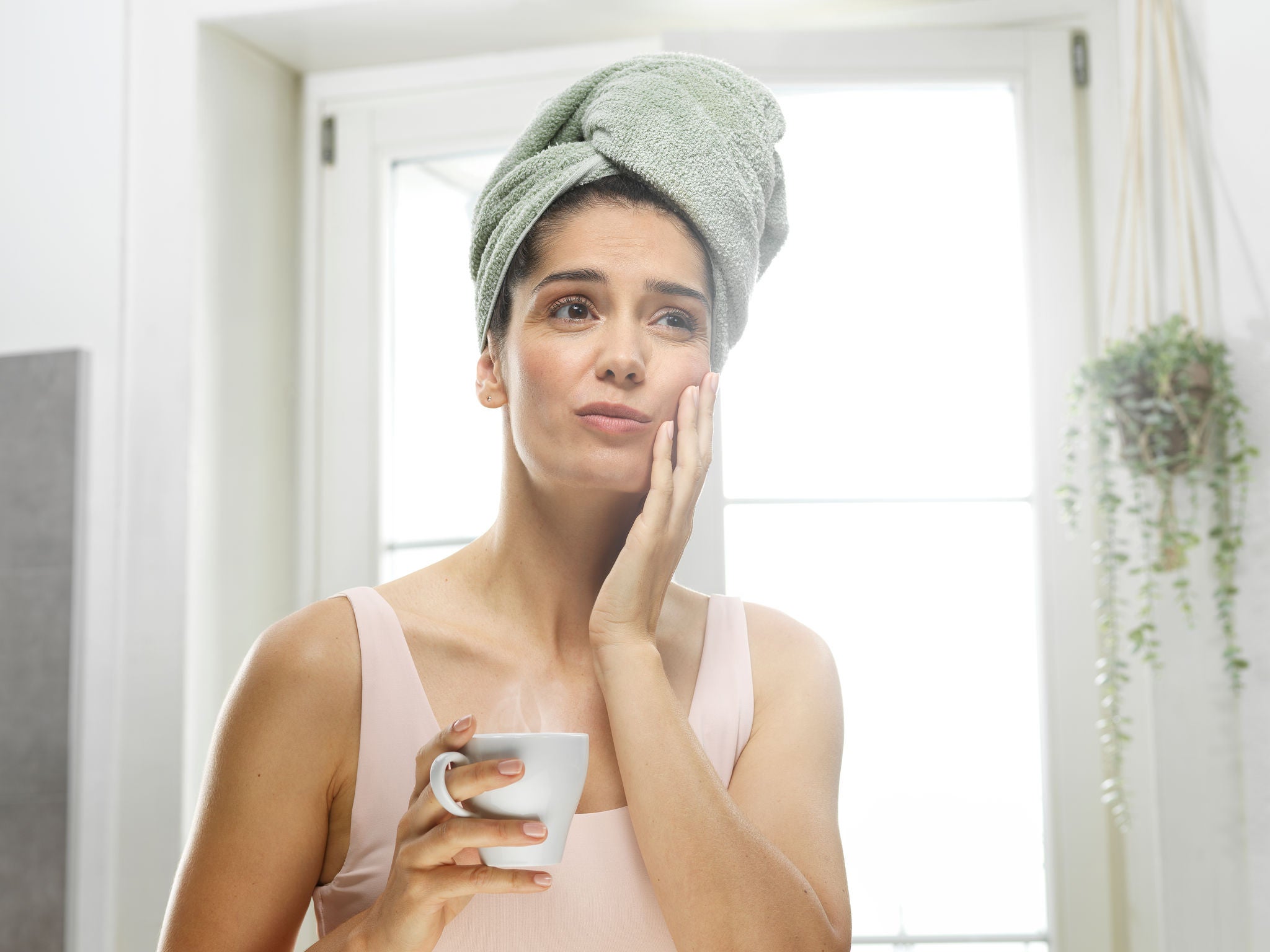
Often, people with stained teeth also happen to have tooth sensitivity. This is because both conditions share common causes. For instance, certain foods and drinks (coffee and acidic foods for example) which cause stains are also responsible for increased sensitivity over time. This is also the case with ageing which causes your enamel to become thinner. This reveals the dentin (the inner tissue of your tooth) which, not only is naturally more yellow. Dentin also holds tubules which contain thousands of nerve endings that cause you to feel pain.
Tooth sensitivity can also be caused or aggravated by certain teeth whitening products which are harsher than others. Formulations with high levels of abrasive agents, such as hydrogen peroxide, can damage your enamel and cause sensitivity, but can also irritate your gums. So if you’re looking to remove stains, it’s really important that you choose a gentle solution.
4. Can stained teeth be fixed or are they permanent?
It is possible to remove stains and prevent further staining. If you have deep stains, the first thing to do is visit your hygienist for a professional cleaning. Once that’s done, you’ll want to prevent further staining.
This is where small changes to your lifestyle can have a big impact. For example, drinking fewer coffees or soft drinks throughout the day or simply making sure you brush your teeth afterwards, can help prevent new stains from appearing.
Good oral care is also essential, of course. This means seeing your dental professionals on a regular schedule. It means taking simple steps such as brushing, cleaning between your teeth and rinsing on a regular basis, but it also takes using the right products. We recommend trying the GUM® Original White complete kit which combines four gentle products that work together to remove and prevent stains.
5. Why do my teeth stain around the gums?
If you have stains around your gums, it’s probably because you’re struggling to clean those areas properly leading to food and plaque build-up. When brushing, it’s really important that you clean above and below the gum line (for best practices check out this page). After brushing, you should always use an interdental or floss to clean between your teeth and remove any remaining gunk (you’ll find more advice here). For a full mouth clean, you could try the GUM Original White complete kit.
6. I have braces and my teeth are stained – should I be worried?

Cleaning your teeth is more difficult with braces or other orthodontic appliances. Food and plaque can easily build up in certain areas which can lead to extrinsic staining. If that’s the case, we recommend making an appointment with your hygienist for a professional cleaning. You can then follow up with our GUM Original White complete kit at home. To keep your teeth as clean as possible, remember to always brush, clean between your teeth and rinse.
7. How to clean my stained teeth?
Depending on the level of staining, you may want to visit your hygienist first to discuss which treatment is most appropriate for your needs. If your staining is mild, or if you want to maintain results after a professional cleaning, we recommend using the GUM Original White complete kit, at home. It combines a toothpaste, toothbrush, floss to remove and prevent stains in different areas of your mouth. Delivering great results over time without damaging gums or enamel, this gentle solution is suited for those with sensitive teeth.
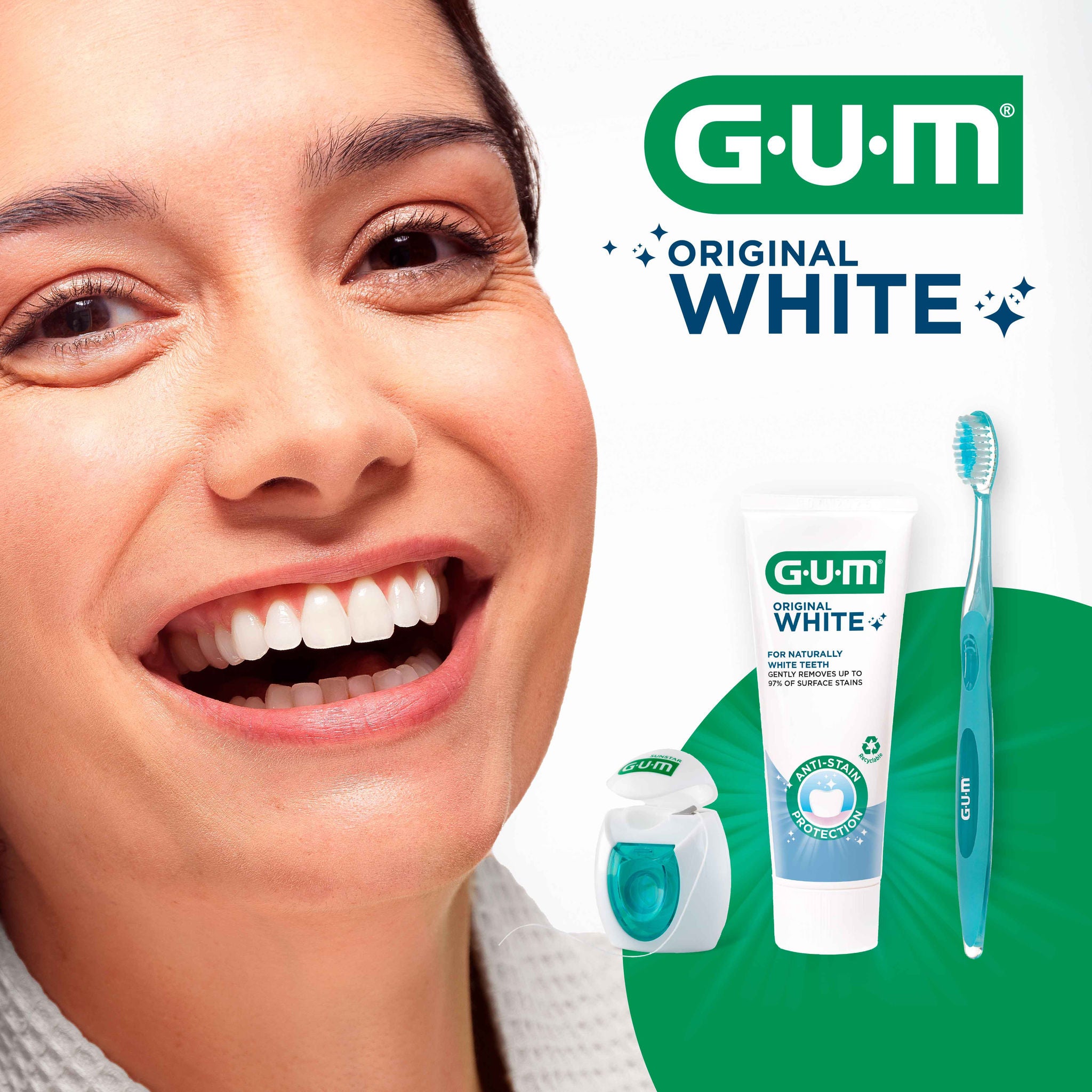
As we are all different, don't forget to visit your oral health practitioner twice a year for personalised advice, diagnosis and care.
